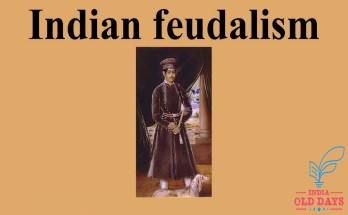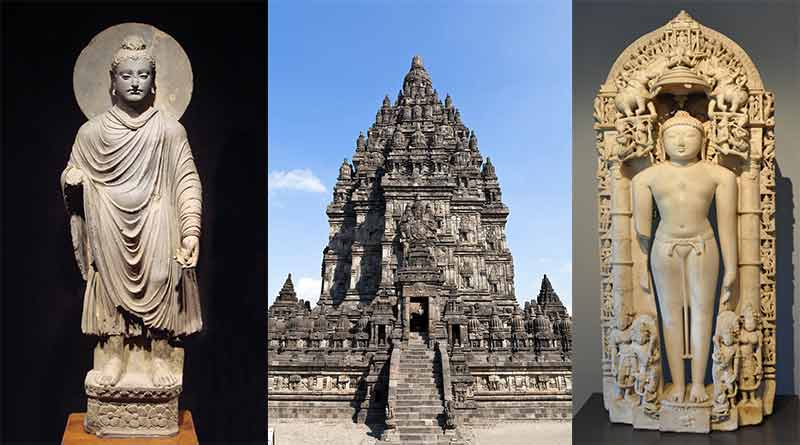Paintings in Gupta Period
In the words of Vasudevashran Aggarwal, painting in Gupta era attained its fullness. There are few examples of Pre-Gupta painting. Early Paintings are found on the walls of prehistoric era mountain caves. Paintings are also found on the walls of some Guha–temples. By the time of Gupta, painters developed their art sufficiently. The famous examples of the history of painting of this era are obtained from the mountain caves named Ajanta located in Aurangabad district of modern Maharashtra province and Badya near Gwalior in Madhya pradesh. Among these, the paintings of Ajanta caves are famous all over world.
In Aurangabad district thirty five miles from the railway station named Jalgaon, there is a village called Fardarpur. Ajanta is located four miles south-west from here. Twenty five caves have been made by cutting the rock here. Among them were four chaityagrh and the rest of the caves. These caves were suddenly discovered by some European soldiers of the Madras army in 1819 AD.
In 1824 AD, General sir James Alexander published details of these for the first time in the journal of the Royal Asiatic Society and informed the world about rare paintings of Ajanta.
The first 29 caves in Ajanta had paintings, but now only 6 caves (1-2,9-10 and 16-17) have residual images. Their time is different. The images of the 9-10 caves date back to the first century BCE. The images of the First-Second caves are from the seventh century AD and the paintings on the pillars of the tenth cave and the murals of sixteenth-seventeenth caves are Gupta Period. The Gupta paintings is excellent.
There are three main themes of Ajanta’s paintings-
- Embellishments ,
- Illustration,
- Description
Embellishments have been made from various flowers, leaves, trees and animals and birds. These are so many, that no one has been repeated. Supernatural and mythological figures like Kinnar, Nag, Garun, Yaksha, Gandharva, Apsara etc. have been used to fill the space. Many Buddha and Boddhisttvo have been depicted. The events related to the physical life of the Buddha are beautifully depicted. Some Lokapaal, kings and Queens are also depicted. Stories taken from the jaatak texts are engraved as descriptive scenes.
Methods of Paintings of Ajanta
- Fresco-In the first paintings were made on wet plaster and the painting was done only with pure colors.
- Tempera-In the second method, drawings were made on dried plaster and egg white and white and lime were mixed with color. Shankachurna, Shilachurna, Sita Mishri, cow dung, white clay, bran etc. were prepared by crushing thick paste.
In Ajanta, paintings have been made from both Fresco and Tempera.
Before making the painting, the wall was thoroughly cleaned and cleaned and then a coating was applied on it. The red khandiya was used to draw the picture. The colors Red, Yellow, Blue, Black and white used. Prior to Ajanta, there is no use of blue in illustration anywhere. Red and Yellow color have been used more. The colors have a supernatural glow,which shines like a moon and star in the midnight.
Reference : https://www.indiaolddays.com




